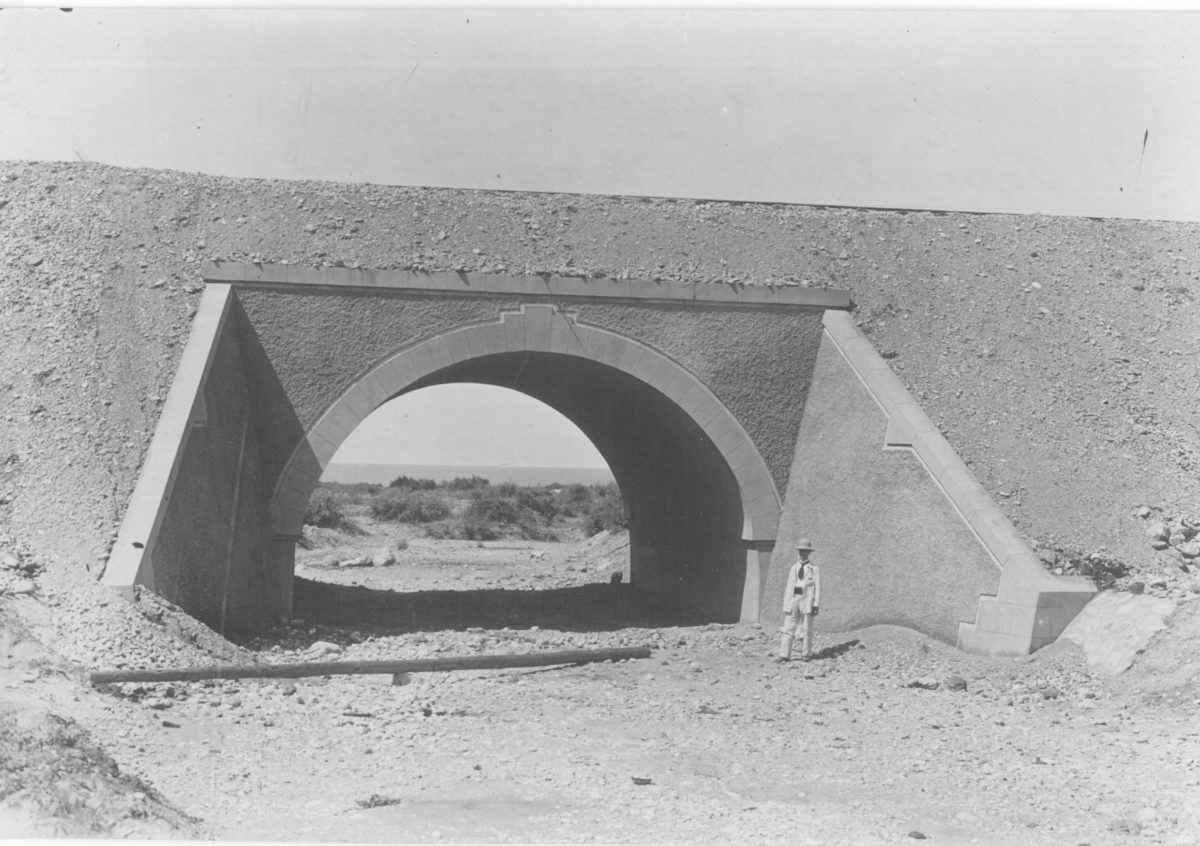Baghdad railway

Construction of the Baghdad railway, passage with Km 35, Toprakkale/Alexandrette, photography presumably by engineer G. E. Ott. Turkey, 1913.
© BBWA U 5/3 Bildarchiv der Philipp Holzmann AG / Hauptverband der Deutschen Bauindustrie e.V. www.holzmann-bildarchiv.de
A railroad line that would run from Berlin via Constantinople (now Istanbul) to Baghdad, and from there on to Basra on the Red Sea – that was the plan. The project was organized and financed by the German Empire, in close coordination with the Ottoman Empire. For Germany, the purpose of the railroad was clear: It was about the rapid deployment of troop units and the transport of raw materials. The Sultan, in turn, needed German assistance to fend off colonial encroachments by the British and French. The railroad was completed only in sections. The project was one of the factors that triggered the First World War.
In return for its investment, Germany was granted mining rights along the railroad line by the Ottoman Empire. At Tell Halaf, right next to the railway line, Max von Oppenheim excavated the monumental basalt sculptures that are now part of the collection of the Pergamon Museum in Berlin.